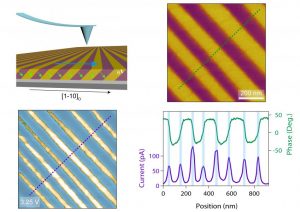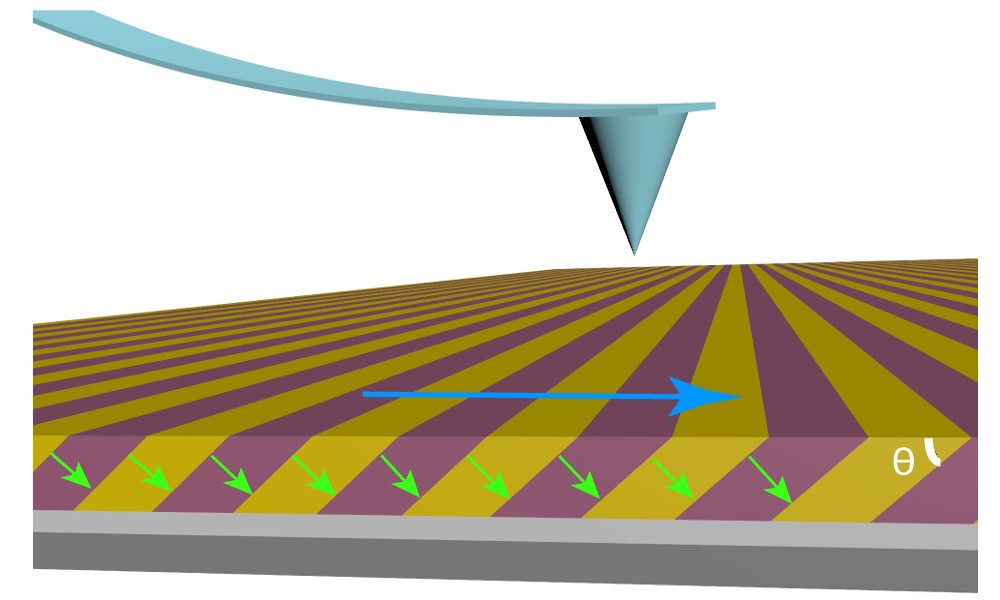Domain walls can give rise to many exotic phenomena, due to the interplay between different degrees of freedom. In particular, the ferroelectric domain walls show great potential in novel nanoelectronic applications because of their enhanced local conductivity.
There have been various pathways developed in the past decade to enhance the local conduction of domain walls, such as doping with extra oxygen vacancies and artificially creating head-to-head polar domain walls. Here, a different approach is reported by Prof. Pu Yu and co-workers from Tsinghua University in their paper published in Annalen der Physik.

The authors studied the local conductivity in bismuth ferrite thin films with well-ordered 71o domain walls, and revealed an unexpected and switchable local conducting region with enhanced conductivity near these 71o domain walls. The high conduction state near the as-grown 71o domain walls is attributed to the emergence of metastable nano-domains with the switching of ferroelectric polarization from downward to upward. Therefore, the result reveals that the local ferroelectric polarization forms a novel method to manipulate the interfacial conductivity through the modulation of the Schottky barrier height across the film surface and conducting AFM tip.
More importantly, the robust 71o domain walls can provide an anchor point to trace the conducting nano-domains.
The result sets up a direct connection between the local conduction near domain walls and the ferroelectric polarization switching, and opens up broad range of opportunities to design novel nanoelectronic devices based on ferroelectric domains and domain walls.

















